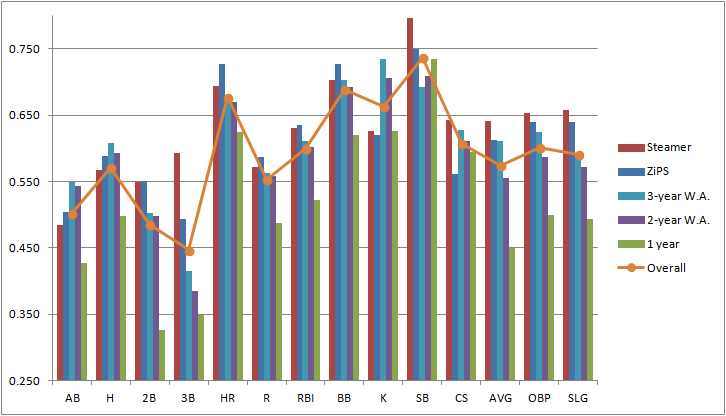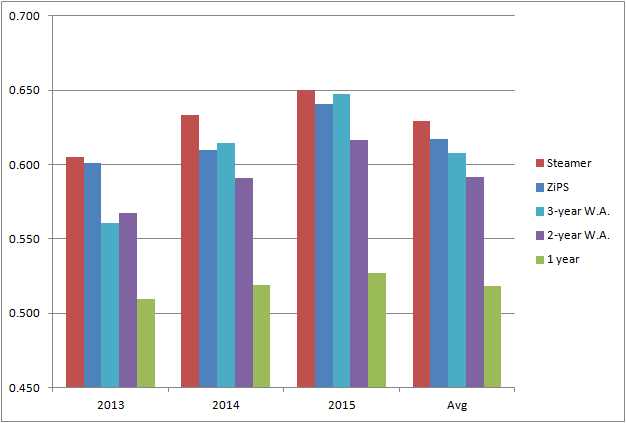The Future of Analytics In Baseball: How Will Small-Market Teams Fare?
This post originally appeared on the Pittsburgh Pirates blog Bucco’s Cove.
A recent episode of the Baseball Prospectus podcast Effectively Wild (and if you don’t listen to it, this is one of the best baseball podcasts out there) had two analysts from the LA Dodgers’ front office as guests. During the episode, one of them said, “Even though we have grown substantially in the last year…” and went on to talk about the size of their analytics department and how they work together. This is a scary prospect for small-market teams like the Pirates; embracing analytics before such things were en vogue allowed teams like the Moneyball A’s, the Royals, the Pirates, and many others to gain a competitive advantage over their comparatively retrograde competition still throwing money at their problems every offseason.
The window of opportunity for small-market teams to use advanced analytics to their advantage may be closing faster than we think. Most (and possibly all, I don’t have access to every team’s front office payroll) teams have some sort of analytics department (or “Baseball Operations Department,” as they’re often dubbed). According to this ESPN article from about 14 months ago, only two woeful teams are listed as “nonbelievers,” the Marlins and the Phillies, and the Phillies have since seen some significant shuffling in their front offices. Larger teams are beginning to emulate their smaller counterparts to varying extents, with results that will bear fruit over the coming seasons. As a fan of a small-market team, this is concerning; the limited dividends paid from the analytics advantage may mean a return to the old power structure in baseball in which larger-market teams with more money have the ability to acquire players at will. The difference, however, will be that stats will have informed the signings, so if two teams are targeting the same player for “sabermetric reasons,” the team with more money will obviously still have the upper hand.
Scarier still for fans of small-market teams is that the greater financial capital available to geographically-favored franchises is that these financial resources can not only be employed to sign the best players, but also the most talented analysts and more of them. The premise that teams all have access to effectively the same data and analysis is rendered moot if larger franchises can secure a stronger analytics department, both in terms of the number of analysts and the talent of the analysts (money could even be used to lure talented analysts to the richer franchises in the same way that players are). For example, the Cubs thus far this season seem to be a perfect confluence of young talent, effective free-agent signings based on a strong analytics department, and a hell of a lot of money, which is exactly where you want to be if you’re trying to create a dynasty and win multiple Commissioner’s Trophies.
Parity in the league is still greater than that of the NFL, but we could be witnessing the last generation of such parity. How is such a situation solved? The one obvious choice is a salary cap; the player’s association would be loath to support such an idea, although it’s perhaps beginning to be in their interest. As the league’s revenue increases, players haven’t been getting the same share of that revenue, according to Nathaniel Grow on FanGraphs. A quote from that article:
“The biggest difference between the NBA and MLB, then, isn’t the fact that the former has a salary cap while the latter does not. Instead, the primary difference between the two leagues’ economic models is that by agreeing to a “salary cap,” NBA players in turn receive a guaranteed percentage of the league’s revenues, while MLB players do not.”
According to the same article, the players’ share of revenue has fallen about 13% to 16% since 2002 or 2003. While this argument is unlikely to induce the MLBPA to support a salary cap, a downturn in league parity could force their hand at some point in the future. This would be a long-term effect, however; many years of a “lack of parity,” coupled with a downturn in the popularity of the sport as a whole, would be required to even have the MLBPA thinking about acquiescing to a salary cap.
Coming back to the proliferation of analytics departments among MLB teams and their effect on important advantages held by those willing to embrace statistics: I don’t know what’s going to happen. There are many facets to analytics, more than just comparing players based on the BABIP or K% or arm slot or determining what players to acquire and how much they’re worth. For example, one of the Effectively Wild guests from the episode I cited earlier was a biomedical engineering major during her undergraduate studies, implying that the front office is becoming interested in the medical side of analytics: preventing injuries, improving player health, and looking at the biomechanical aspect of baseball, which takes a significant toll on players’ bodies. This is not too dissimilar from what the Pirates have done in recent years and is just one of the many components to assembling and maintaining a competitive squad.
This line of thinking admittedly removes the human component from the equation, which is still incredibly important to this entire process. There will always be GMs who are more willing to try new strategies to win and those who are unwilling to change (*cough* Ruben Amaro, Jr.). Coaching and player development, especially in the minor leagues, will continue to be extremely important for MLB franchises and is largely outside the purview of the type of statistical analysis that is widely considered in evaluating players. Rather, this part of baseball can be thought of, to a certain extent, as producing the statistics that analysts ultimately study. As a result, there will always be opportunities for smaller-market teams to hire talented personnel, including trainers, coaches, scouts, and other employees outside the scope of the Major League analytics departments that will influence franchises’ success and failure.
However, analytics at the MLB level may start to be influenced by money. Ultimately, stories like the Pirates’ repeated acquisitions of undervalued Yankee catchers who are stellar pitch framers, the Royals’ World Series win relying on great defense and a crazy strong bullpen, and the general parity of the league beyond the traditionally great franchises may be fewer and further between. Those franchises with more money may regain the competitive advantage that the sabermetric revolution has wrested away from them for the past decade, and smaller-market teams will have to find yet another way to adapt to the ever-changing baseball landscape.























